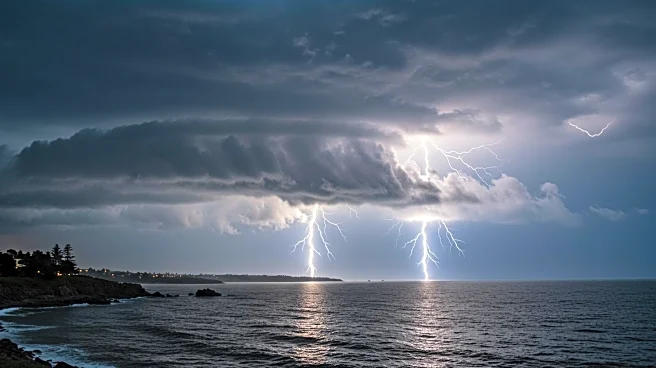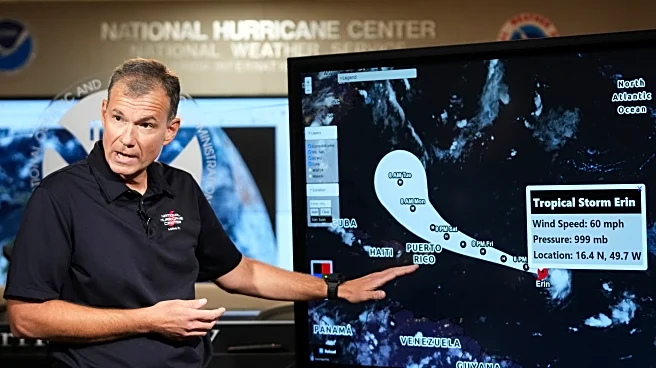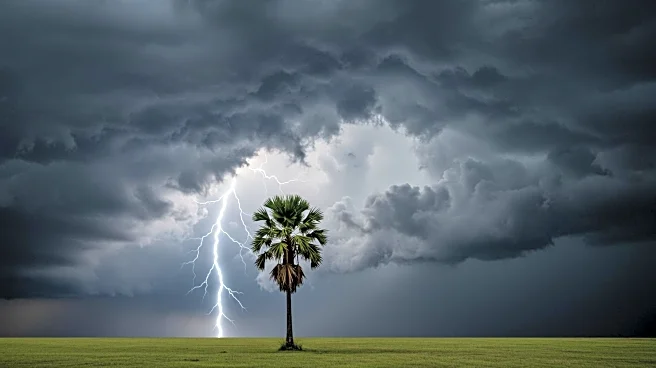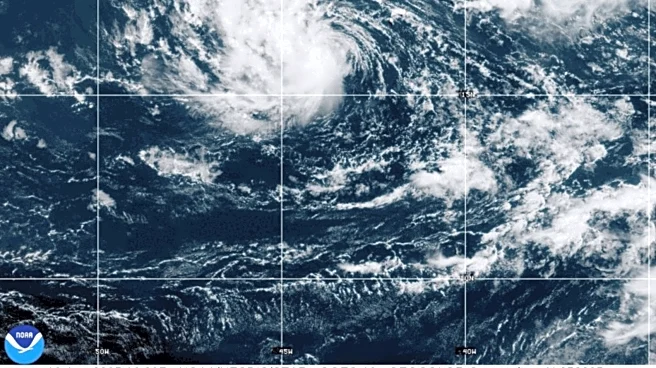What's Happening?
Hurricane Erin has become the first Atlantic hurricane of the year, with winds reaching 75 mph as it approaches the Caribbean islands. The National Hurricane Center forecasts Erin to intensify into a Category 4 hurricane by Monday. The storm is expected to bring heavy rain, strong winds, and hazardous sea conditions to parts of Puerto Rico and the Virgin Islands. Tropical storm watches are in effect for several islands, with weather expected to deteriorate starting Friday night. Erin's path is projected to remain offshore, avoiding direct landfall, but its outer bands could cause localized flooding and dangerous surf conditions.
Why It's Important?
Erin's intensification into a major hurricane poses significant risks to the Caribbean, including potential flooding and dangerous sea conditions. The storm's trajectory could also impact the U.S. East Coast, with forecasts suggesting rough surf and rip currents. This development highlights the need for preparedness and monitoring in regions vulnerable to severe weather. The situation underscores the broader impacts of climate change on hurricane activity, necessitating adaptive strategies and increased resilience in affected areas.
What's Next?
Erin is forecast to continue strengthening over the warm Atlantic waters, potentially reaching Category 4 status by Monday. The storm's path is expected to remain offshore, but its effects could be felt along the U.S. East Coast and in Bermuda. Residents in affected areas are advised to stay informed and prepare for possible impacts, including heavy rain and dangerous sea conditions. The National Hurricane Center will continue to monitor Erin's development and provide updates on its trajectory and intensity.
Beyond the Headlines
The rapid intensification of Erin is part of a broader trend of more frequent and powerful hurricanes, driven by climate change and warmer ocean temperatures. This trend poses challenges for disaster preparedness and response, particularly in regions prone to severe weather. The situation calls for increased investment in climate resilience and adaptation measures to mitigate the impacts of such storms. Additionally, the economic and social implications of frequent hurricanes necessitate a reevaluation of infrastructure and emergency management strategies.












